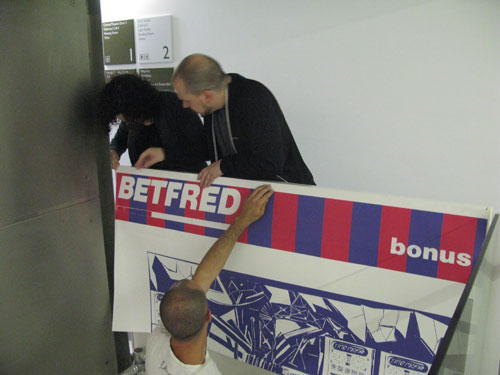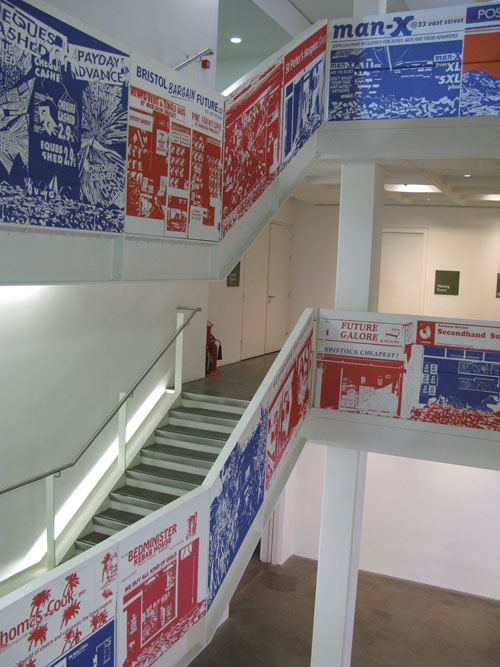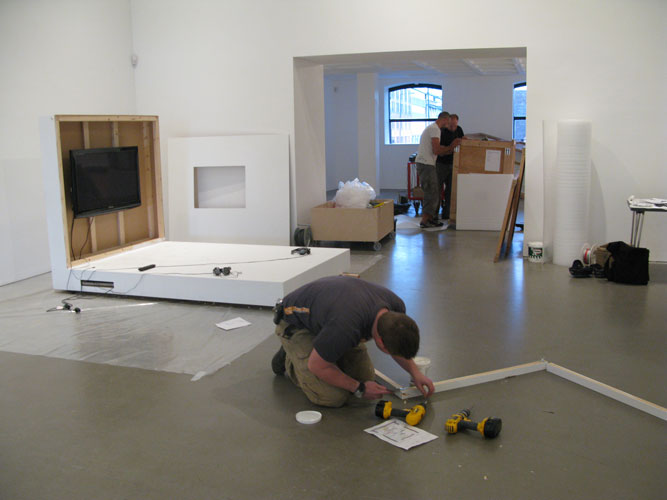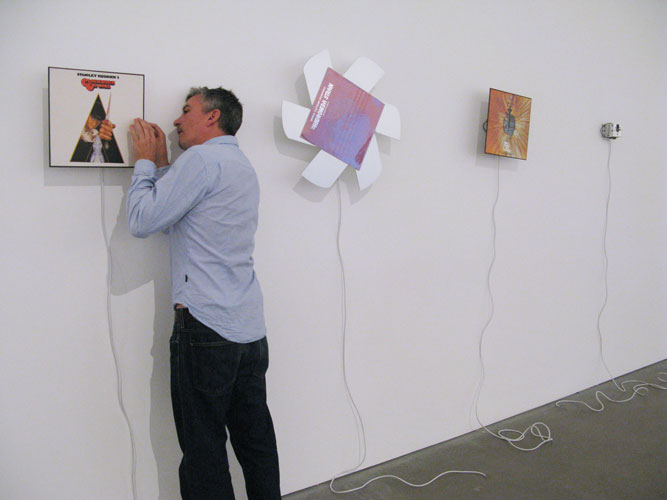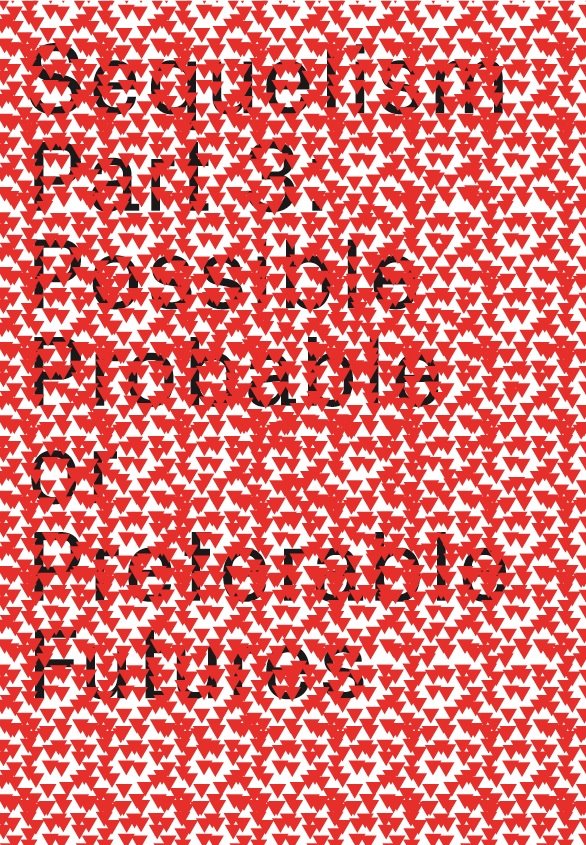Cover Story—Summer 2019: Francesc Ruiz’s Brexit Bristol sequel, ten years ago
Mon, Jul 1 2019
Latitudes' homepage www.lttds.org
The July 2019 monthly Cover Story ‘Francesc Ruiz’s Brexit Bristol sequel, ten years ago’ is now up on Latitudes' homepage: www.lttds.org
“The British political system has collapsed… Once the high streets merely declined with their pound shops, gold traders, and bargain basements… Then they slumped as the "major downturn" began to bite… Yet as the economy finally plunged into the devastating recession, countless properties and businesses across the city of Bristol already lay in ruins… Widespread rioting and looting… Shortages of food and medicines… Spiralling inflation rates and a currency crash… The troops now struggle to enforce the state of emergency… The traitors flock to the southern ports, desperately seeking safe passage to Brussels…”
→ Continue reading
→ After this month it will be archived here.
Cover Stories' are published on a monthly basis on Latitudes' homepage featuring past, present or forthcoming projects, research, texts, artworks, exhibitions, films, objects or field trips related to our curatorial activities.
RELATED CONTENT:
- Archive of Monthly Cover Stories
- Cover Story—June 2019: Thinking like a drainage basin: Lara Almarcegui’s ‘Concrete’ 1 June 2019
- Cover Story—May 2019: Buenos Aires in Parallel 1 May 2019
- Cover Story—March-April 2019: "Icelandic refraction" 3 March 2019
- Cover Story—February 2019: Schizophrenic Machine (1 February 2019)
- Cover Story—January 2019: “Seesaw” (7 January 2019)
Installation shots of 'Sequelism...', Arnolfini, Bristol on Latitudes' website
Tue, Jul 21 2009Francesc Ruiz 'Untitled' (Bristol) 2009. Photos: Latitudes | www.lttds.org
We have uploaded a slideshow with installation shots (CLICK HERE) of the recently inaugurated exhibition 'Sequelism Part 3: Possible, Probable, or Preferable Futures' on view at Arnolfini, Bristol until 20 September 2009.
'Sequelism, Part 3: Possible, Probable or Preferable Futures' is an exhibition project that looks into the future and at that which is yet to happen. It considers how the inexact arena of futurology is used as a means to better comprehend the present and the past.
'Sequelism Part 3' includes works by Mariana Castillo Deball (1975, Mexico City. Lives in Berlin/Amsterdam), Heman Chong (1977, Malaysia. Lives in Berlin/Singapore), Graham Gussin (1960, London. Lives in London), Victor Man (1974, Cluj–Napoca. Lives in Cluj–Napoca), Francesc Ruiz (in residency) (1971 Barcelona. Lives in Barcelona/Berlin), Jordan Wolfson (1980, New York. Lives New York/Berlin) and Haegue Yang (1971 Seoul. Lives in Berlin/Seoul).
Haegue Yang, 'Holiday for Tomorrow', 2007. Photos: Latitudes | www.lttds.org
Taking the style of a magical realist tale or children's story, Mariana Castillo Deball's 'Nobody Was Tomorrow' (2007) consists of three interconnected stories based on the fictional connections between three real ‘characters’ – ‘Nobody’ a defunct accelerating aging machine, a sprawling fig tree and the remains of a Roman bath in Čačak, Serbia. Castillo Deball makes us mindful of culture’s fortunes through a swirling fable about the sedimentation of time, encapsulated by an image of a damaged book.
'Index (Down)' (2009) is part of Heman Chong's ongoing series ‘Surfacing’, which requires the action of putting up 3000 stickers on a wall within a given set of instructions. The red triangular stickers are intended to resemble the downward pointing arrows used to denote a fall in value of stock exchanges. Considering the paranoia around the scenario of economic freefall, Index (Down) uses this motif to create an abstract pattern evoking a waterfall.
Graham Gussin's 'Hypnotic/Dystopic/Optic' (2009) presents a ‘horizon line’ of rotating record covers for soundtracks to renowned dystopian science fiction films. The covers are set to rotate at the speed at which their images ‘vaporise’ at the limit of visual comprehension. 'In The Not Too Distant Future (Self Portrait with Sleeping Masks)' (2009) is a self-portrait of the artist inspired by a scene from the film La Jetée (1962) concerning an experiment in time travel following a nuclear war.
Francesc Ruiz's stair barriers installation 'Untitled (Bristol)' (2009) takes the shop windows of the high streets in the south of Bristol – East Street and North Street – as sequential units akin to comic-book vignettes. Ruiz has created a narrative around a dystopian future in which destruction, revolt, and anger have invaded the city after an economic downturn.
Jordan Wolfson 'Untitled' (2007) centres on a 1984 Macintosh 128k, the first affordable home computer to use a mouse-driven graphical user interface. The computer is seen stranded by the side of a road in Connecticut, built in the late 1930s following the Great Depression. The soundtrack comprises a triumphalist monologue concerning the emergence of American abstract painting in the 1950s. Wolfson is interested in obsolescence and in these elements as generational touchstones.
Victor Man's three pieces could be read in terms of premonition and symbolic rites which relate to the uncertainty of the future in a similar way that memory relates to the past. A taxidermy fox head is wedged within a metal structure as if a votive or magical offering. Vinyl text on a wall is negated by a neon ‘X’. A ceramic funerary plate bears the image of stars, whose arrangement has often been interpreted by man in terms of fate and fortune.
Haegue Yang's 'Holiday for Tomorrow' (2007) considers our perception of time, and the emotional anticipation of holidays, those socially-agreed days in which labour is suspended and we attempt to rest our bodies and minds. At its centre is a video essay showing Seoul during the Korean harvest holiday Chuseok over which a female voice reflects on the postponement of desire and the dysfunctional hopes triggered by enforced leisure.
Accompanying events and film programme here.
Exhibition curated by Nav Haq (Curator, Arnolfini) and Latitudes.
Supported by the State Corporation for Spanish Cultural Action Abroad (SEACEX), the Direction of Cultural and Scientific Relations of the Spanish Ministry of Foreign Affairs, Institut Ramon Llull, IFA, National Arts Council, Singapore and The Ratiu Family Foundation.
Sequelism Part 3... images of the installation in progress
Wed, Jul 15 2009SAVE THE DATE: Friday 17 July opening of 'Sequelism Part 3. Possible, Probable or Preferable Futures', Arnolfini, Bristol
Mon, Jul 6 2009
Invitation design to the exhibition with work by Heman Chong.
'Sequelism Part 3: Possible, Probable or Preferable Futures' (18 July–20 September 2009)
Preview: Friday 17 July, 6–8pm
Venue: Arnolfini, Bristol, UK
Venue: Arnolfini, Bristol, UK
Artists: Mariana Castillo Deball (1975, Mexico City. Lives in Berlin/Amsterdam), Heman Chong (1977, Malaysia. Lives in Berlin/Singapore), Graham Gussin (1960, London. Lives in London), Victor Man (1974, Cluj–Napoca. Lives in Cluj–Napoca), Francesc Ruiz (in residency) (1971 Barcelona. Lives in Barcelona/Berlin), Jordan Wolfson (1980, New York. Lives New York/Berlin) and Haegue Yang (1971 Seoul. Lives in Berlin/Seoul)
Co-curated by Arnolfini and Latitudes
'Sequelism Part 3: Possible, Probable or Preferable Futures' is a project that looks into the future and at that which is yet to happen. It considers how art and the inexact arena of futurology might be utilised as a means to better comprehend, rethink, obscure, or even colonise the present. Knowledge of current and historical events often plays a role in collective foresight or prognoses of change that is yet to take place. In a similar fashion, futurology could be said to deal with memory in reverse. The project seeks to investigate how prospective visions might be generated for vastly differing reasons, offering great idealism on the one hand, or harnessing political and societal anxiety on the other.
The future is commonly manifested in popular cultural forms, including science fiction, yet how might we look beyond the present without recourse to established genres? To what extent does strategic foresight affect our understanding of the ‘now’ or the ‘when’? Is the future a culturally specific phenomenon that is inherently ‘Western’ in its own gaze and orientation? And just how accurate can we be when imagining the future? The Sequelism project addresses issues and questions such as these. Disputing illustrative organisation around a predetermined thesis, the project itself invites doubt, speculation, and to-be-determined outcomes.
This is the first in a trilogy of Sequelism exhibitions, with Part 2 in 2010.
More information: http://futurologyprogramme.org
Events and screenings
Neil Cummings and Marysia Lewandowska
Museum Futures: Distributed
Screening/Discussion, Saturday 18 July, 2pm, Free
Neil Cummings and Marysia Lewandowska’s film 'Museum Futures: Distributed (2008) is a machinima record of the centenary interview with Moderna Museet’s executive Ayan
Lindquist in June 2058. It explores a possible genealogy for contemporary art practice and its institutions, by reimagining the role of artists, museums, galleries, markets, ‘manufactories’ and academies. The screening will also incorporate a discussion led by Neil Cummings and the curators of the Sequelism exhibition, discussing the future of art institutions.
The Futurological Congress
Sequelism Artists’ Screening Programme
Screening, Friday 21 August, 7.30pm, £3/£2 concs
A programme of artists’ videos selected by the curators of Sequelism to accompany the exhibition, including works by Marjolijn Dijkman, Jordan Wolfson and Julia Meltzer & David
Thorne. Introduced by Nav Haq, Exhibitions Curator, Arnolfini.
David Maljkovic
'Scene for a New Heritage Trilogy Screening'
Thursday 17 September, 6.30pm, Free
The films in David Maljkovic’s renowned 'Scene for a New Heritage Trilogy' (2004–6) are set between 2045 and 2071, visualising different encounters with a communist monument at the memorial park at Petrova Gora, Croatia, and speculating on how the meanings of history and monuments change over time.
Roy Ascott
Art and Technoetic Evolution: when the Mind outgrows the Body
Artist’s talk, Saturday 19 September, 2pm, Free
Artist and theorist Roy Ascott gives a presentation on the recent ideas informing his Technoetics art practice, that has grown out of his long-term research into cybernetic and ‘telematic’ art.
Will Holder
Neologisms Workshop
Workshop, September, date TBC, Free
Booking required, call 0117 917 2300 / 01
A language workshop for young people led by the designer, writer, and editor Will Holder for constructing brand new words or ‘neologisms’, inspired by R. Buckminster Fuller’s technique for synthesizing existing words to generate names for new concepts and designs.
–
Arnolfini
16 Narrow Quay
Bristol BS1 4QA, UK
www.arnolfini.org.uk
Opens: 10am-6pm Tues-Sun & Bank Holiday Mondays | Closed Mondays | Free entrance
Sequelism is possible thanks to the generous support of the State Corporations for Spanish Cultural Action Abroad (SEACEX), the Direction of Cultural and Scientific Relations of the Spanish Ministry of Foreign Affairs, Institute Ramon Llull, The National Arts Council Singapore and IFA.
Co-curated by Arnolfini and Latitudes
'Sequelism Part 3: Possible, Probable or Preferable Futures' is a project that looks into the future and at that which is yet to happen. It considers how art and the inexact arena of futurology might be utilised as a means to better comprehend, rethink, obscure, or even colonise the present. Knowledge of current and historical events often plays a role in collective foresight or prognoses of change that is yet to take place. In a similar fashion, futurology could be said to deal with memory in reverse. The project seeks to investigate how prospective visions might be generated for vastly differing reasons, offering great idealism on the one hand, or harnessing political and societal anxiety on the other.
The future is commonly manifested in popular cultural forms, including science fiction, yet how might we look beyond the present without recourse to established genres? To what extent does strategic foresight affect our understanding of the ‘now’ or the ‘when’? Is the future a culturally specific phenomenon that is inherently ‘Western’ in its own gaze and orientation? And just how accurate can we be when imagining the future? The Sequelism project addresses issues and questions such as these. Disputing illustrative organisation around a predetermined thesis, the project itself invites doubt, speculation, and to-be-determined outcomes.
This is the first in a trilogy of Sequelism exhibitions, with Part 2 in 2010.
More information: http://futurologyprogramme.org
Events and screenings
Neil Cummings and Marysia Lewandowska
Museum Futures: Distributed
Screening/Discussion, Saturday 18 July, 2pm, Free
Neil Cummings and Marysia Lewandowska’s film 'Museum Futures: Distributed (2008) is a machinima record of the centenary interview with Moderna Museet’s executive Ayan
Lindquist in June 2058. It explores a possible genealogy for contemporary art practice and its institutions, by reimagining the role of artists, museums, galleries, markets, ‘manufactories’ and academies. The screening will also incorporate a discussion led by Neil Cummings and the curators of the Sequelism exhibition, discussing the future of art institutions.
The Futurological Congress
Sequelism Artists’ Screening Programme
Screening, Friday 21 August, 7.30pm, £3/£2 concs
A programme of artists’ videos selected by the curators of Sequelism to accompany the exhibition, including works by Marjolijn Dijkman, Jordan Wolfson and Julia Meltzer & David
Thorne. Introduced by Nav Haq, Exhibitions Curator, Arnolfini.
David Maljkovic
'Scene for a New Heritage Trilogy Screening'
Thursday 17 September, 6.30pm, Free
The films in David Maljkovic’s renowned 'Scene for a New Heritage Trilogy' (2004–6) are set between 2045 and 2071, visualising different encounters with a communist monument at the memorial park at Petrova Gora, Croatia, and speculating on how the meanings of history and monuments change over time.
Roy Ascott
Art and Technoetic Evolution: when the Mind outgrows the Body
Artist’s talk, Saturday 19 September, 2pm, Free
Artist and theorist Roy Ascott gives a presentation on the recent ideas informing his Technoetics art practice, that has grown out of his long-term research into cybernetic and ‘telematic’ art.
Will Holder
Neologisms Workshop
Workshop, September, date TBC, Free
Booking required, call 0117 917 2300 / 01
A language workshop for young people led by the designer, writer, and editor Will Holder for constructing brand new words or ‘neologisms’, inspired by R. Buckminster Fuller’s technique for synthesizing existing words to generate names for new concepts and designs.
–
Arnolfini
16 Narrow Quay
Bristol BS1 4QA, UK
www.arnolfini.org.uk
Opens: 10am-6pm Tues-Sun & Bank Holiday Mondays | Closed Mondays | Free entrance
Sequelism is possible thanks to the generous support of the State Corporations for Spanish Cultural Action Abroad (SEACEX), the Direction of Cultural and Scientific Relations of the Spanish Ministry of Foreign Affairs, Institute Ramon Llull, The National Arts Council Singapore and IFA.

